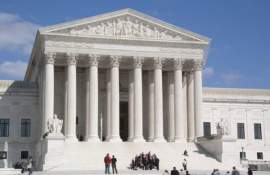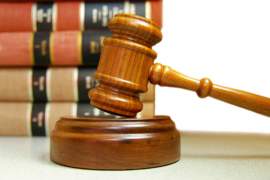
Declaration of Independence - Implications and Image for the Constitution

Popular In Constitution
Purpose Of Lifetime Appointment And Pros And Cons Enumerated Powers Bicameral Legislature Background Article 3 Of The Constitution We The People 1st Amendment Who Wrote The Constitution Judicial Review Equal Protection Clause Three Fifths Compromise 10th Amendment 5th Amendment
Authored in 1776, the Declaration of Independence established the United States as a sovereign nation. The content of the Declaration of Independence outlined an ideal process of gubernatorial rule, contrasting that of the British monarchy under King George III. Thomas Jefferson, who is credited with primary authorship, attacked King George III within the text of the Declaration of Independence, claiming that the methodology of British monarchical rule abused and exploited its citizens. As a result of their new-found autonomy, the United States were free to rule themselves.
The ratification of the Declaration of Independence in 1776 was a monumental event. By signing and approving a document that openly criticized the methods employed by their former ruler, the United States had taken the first steps towards establishing themselves as a viable, self-ruling nation. Prior to the Revolutionary War, the Declaration of Independence would have been labeled as a treasonous doctrine. However, in the wake of his defeat, King George III was powerless to react to the criticisms listed in the Declaration of Independence.
The implications of the Declaration of Independence were obvious. The United States were unwilling to recreate a tyrannical monarchical governmental model under which they would be ruled. Thomas Jefferson - with the help of Benjamin Franklin and John Adams - penned the Declaration of Independence with the hopes of instituting a democratic methodology by which a central government would operate.
Though a majority of the citizens of the United States still harbored resentment towards to the British, the Declaration of Independence demanded the humane treatment of all residents of the United States. This included British Loyalists still living in the United States. Not only were all British prisoners required to be freed, but any property that was taken from British Loyalists in an unjust manner was ordered to be returned. By doing so, the authors of the Declaration of Independence set the groundwork for a new nation rooted in liberty and democracy.
The Declaration of Independence set the stage for what would become the Constitution of the United States. By instituting a government whose role was to serve its citizens, the Declaration of Independence quelled any possibility of monarchy returning to the United States. The Declaration of Independence allowed its citizens ‘Life, Liberty, and the Pursuit of Happiness’, and as a result, placed the citizens in a position of power. These irrevocable rights, over which the central government had no control, placed the citizens of the United States in a position of power over the central government.
The Declaration of Independence forged the way for what we now know as democracy. Democratic governmental bodies are elected by the citizens they serve and are subject to removal in the event of any violation or threat of liberty. The Declaration of Independence states that the citizens of the United States allow themselves to be governed by an elected central government, a notion that contrasted their previous rule under King George III.
By criticizing the methodology of the British monarchy, the authors of the Declaration of Independence paved the way for freedom of speech. Though such open criticism of a governmental body would have been considered treasonous prior to the Revolutionary War, the Declaration of Independence aimed to provide the citizens of the United States with an abundance of freedoms.
NEXT: What You Need to Know About The Lack of Governmental Power





















